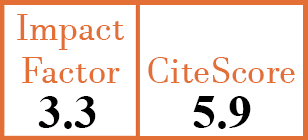Full Papers
Burden of autoantibodies and association with disease activity and damage in systemic lupus erythematosus
Z. Touma, D.D. Gladman, D. Tulloch-Reid, S.M. Toloza, D. Ibañez, P.R. Fortin, M.B. Urowitz
CER735
2010 Vol.28, N°4
PI 0525, PF 0531
Full Papers
Free to view
(click on article PDF icon to read the article)
PMID: 20659409 [PubMed]
Received: 25/11/2009
Accepted : 22/03/2010
In Press: 30/08/2010
Published: 30/08/2010
Abstract
OBJECTIVES:
To determine whether immunological burden of autoantibodies as reflected by the number of cumulative antibodies present at inception and after 3 and 5 years is associated with or predicts subsequent disease activity and damage in lupus.
METHODS:
Patients with SLE followed from inception at a single centre between 1992 and 2007 were included. Twelve autoantibodies were assayed in each patient at years 1, 3 and 5 of disease. The relationship between the burden of autoantibodies and outcomes, SDI (Systemic Lupus International Collaborative Clinics Damage Index), AMS (Adjusted Mean SLEDAI-2K) and AMS excluding anti-ds DNA (AMS-DNA) was evaluated as an association and as prediction. We determined the association between autoantibody burden and outcomes at years 1, 3 and 5 and the prediction using autoantibody burden at year 1 and year 3 to predict outcomes at years 3 and 5 respectively.
RESULTS:
Between 1992 and 2007, 235 inception patients were identified. Of these, 223, 163 and 129 patients had 10 or more autoantibodies tested at years 1, 3 and year 5 following diagnosis respectively. There was no association between the burden at years 1, 3 and 5 and outcome measures at years 1, 3 and 5 respectively. Furthermore, burden of autoantibodies at years 1 and 3 did not predict the outcome measures at years 3 and 5 respectively.
CONCLUSIONS:
Immunological burden in SLE at years 1, 3 or 5 as reflected by the number of autoantibodies found, was not associated with or predictive of subsequent disease activity or damage over time.


